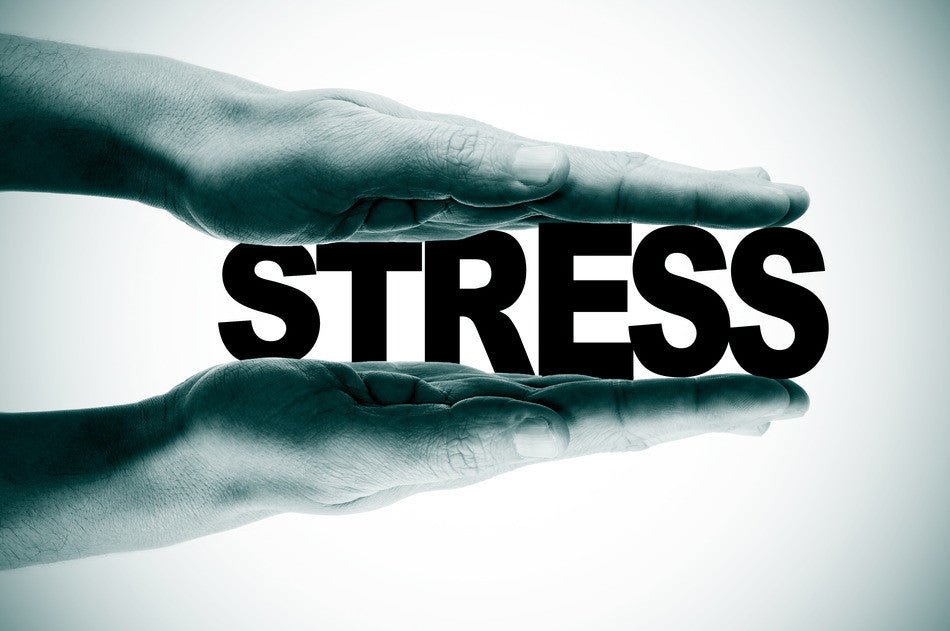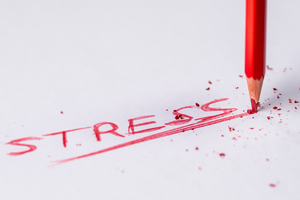The Importance of Stress Reduction in the Maintenance of Wellness and the Prevention of Chronic Disease

Stress is increasingly becoming a root problem in most health conditions, and is an especially significant element in global pain and fatigue conditions such as fibromyalgia. Physical and occupational stressors are commonly encountered throughout life and may include a busy schedule, a demanding occupation, managing children and family life, financial burdens, a heavy school load, planning for a large event such as new move or job, and the never-ending pinging of electronic devices and communications invading everyday life. Emotional stress is more complex and often stems from weightier matters such as relationship difficulties, abuse, death, fear and anxiety. While everyone experiences temporary physical stressors throughout their life, emotional stressors can linger and lead to damaging feelings of despair and hopelessness if resolution is not obtained. Both forms of stress can have a significant impact on physical and mental health, reducing the body’s resiliency and arresting the healing process. The health effects of chronic stress have been the subject of many studies in recent years, owing to the fact that it has been linked to increased risks of cardiovascular disease and upper respiratory diseases, psychiatric conditions such as depression and anxiety disorders, widespread inflammation, and autoimmune conditions. In light of this, the fight for optimal health requires a commitment to daily stress reduction.
An individual’s stress response is highly dependent on genetic vulnerability, coping mechanisms, personality, and the presence of social and familial support. Any type of stress puts excess pressure and demands on the body, prompting various biological systems to respond. Individuals with a high level of resiliency and a strong support system are often able to cope with and manage greater levels of stress, compared to those whose constitution is weak and who lack the support of others. Chronic stress triggers the production of cortisol and catecholamines such as dopamine and norepinephrine - hormones which activate the “fight and fight” response. As these hormones surge through the body, they suppress the immune system and the healing mechanisms, by blocking the production of various immune cells. They also increase the body’s use of sugars and proteins in an effort to support the high amount of energy needed to maintain the stress response. As a result, muscle wasting and nutrient deficiencies may ensue. Stress hormones also disturb normal sleep patterns and cognitive function as they interact with and alter brain neurotransmitters. Temporary stress is unlikely to create long-term health effects; however, chronic stress easily disrupts several biological systems, illustrating why it has become a root element in chronic health conditions, and especially in global pain and fatigue disorders such as fibromyalgia.
Stress-Reducing Activities
Occasional stress is, quite simply, a part of human life and there are certainly occasions when stressors are heavier and threaten our health. However, incorporating basic stress-reducing activities into a daily routine can be helpful in balancing the stress response and increasing resiliency.
One of the most basic behaviors that can help in reducing stress and improve health, is to evaluate whether you are overcommitted. Life is full of opportunities, but the human body is limited in its capacity. Therefore, learning to focus on a few important commitments, while simultaneously forgoing less important opportunities will help prevent stress associated with over-commitment. Establishing boundaries and fully committing to a few select obligations often produces a deeper sense of satisfaction and accomplishment.
Regularly participating in some form of mind-focusing exercise is shown to have significantly positive impacts on stress levels and mental health. Meditation, prayer and guided imagery are all excellent tools for focusing the mind. Meditation trains the brain to become aware of the moment and single-focused. Chronic stress often exerts itself as “mind-racing” and hypervigilance. Regular meditation can help bring thoughts into focus, improve attention, facilitate problem-solving, reduce all stress biomarkers, and improve cardiovascular risk factors. Likewise, prayer is a form of religious meditation that confers all the same benefits as other forms of meditation. Throughout history, it has been noted that religious practices such as prayer are significantly beneficial for reducing anxiety, improving mood and mental outlook, pain tolerance, and general health. Guided imagery is a powerful relaxation tool that encourages optimism and positive thoughts. It has also been proven to improve sleep, pain, anxiety and depression.
Chronic stress can result in tight, spasmodic muscles, provoking pain, fatigue, and weakness. Engaging in light physical activity through stretching, yoga, walks through nature, and enjoyable activities is useful for encouraging relaxation, loosening tight muscles, improving blood flow, and decreasing pain. Light physical activity coupled with a mind-focusing activity creates a perfect marriage for stress-reduction by targeting both physical and mental stress. Deep diaphragmatic breathing is another important adjunct to both mental and physical activities intended to reduce stress.
Creating a calming environment through the use of music and light is a simple way to sustain a state of relaxation. Like guided imagery, music therapy promotes positive emotions while reducing anxiety and stress. Classical music, particularly, has been shown to positively stimulate the parasympathetic nervous system to slow the heart rate and relax muscles. Colored light has the ability to affect brain hormones such as serotonin and melatonin, both of which are important for establishing a healthy wake/sleep cycle and contribute to positive moods. Specific colors have been used to foster specific moods in the practice of chromotherapy. Most individuals can affirm the positive effects of warm sunlight versus the cold, fearful feelings provoked by dark, shadowy colors. Aromatherapy is yet another means of generating a calming environment, helpful for reducing stress.
Stress-Reducing Botanicals/Nutrients
As alluded to earlier, chronic stress places substantial demands on various biological systems; most notably, the endocrine system, which is responsible for producing many of the hormones involved in the stress response. As stress-reduction is pursued, various botanicals may be helpful for supporting these biological systems and motivating quicker improvement. Panax ginseng, Eleutherococcus senticosus, and Rhodiola rosea, are among the best known species of plants in a class of botanicals known as adaptogens. These botanicals support the adrenal glands and balance the production of stress hormones, thereby improving the body’s resiliency to stress and helping to recover. However, some of these classic adaptogens can be somewhat stimulating to the system and can make issues such as anxiety and hyper-vigilance issues worse. Therefore, I prefer using claming or neutral adaptogens mainly such as Withania somnifera (Ashwagandha). Still other botanicals can help reduce anxiety, promote relaxation, and improve sleep by supporting neurotransmitters in the brain. These botanicals include valerian, chamomile, lemon balm, Bacopa, passionflower, and hops.
Natural brain hormones such as melatonin and 5-HTP are temporarily helpful when disrupted sleep patterns and increased pain perception prevent recovery from stress. Similarly, amino acids such as L-theanine, L-tyrosine, and L-tryptophan can be useful in boosting natural hormone production since these amino acids are precursors in the production of many brain hormones and neurotransmitters, although the latter two can also provide an unwanted stimulatory effect in some circumstances so they should be used under the guidance of a health care professional skilled in the nuances of managing the stress response with nutritional and botanical agents.
As conditions such as fibromyalgia, chronic fatigue syndrome, and irritable bowel syndrome continue to surge, it is imperative to remove any roadblocks to healing. Stress is a foremost concern in many health conditions and may not only be a roadblock, but also a root cause of poor health and healing. Stress-reduction often clears the muddy waters of poor health and allows for a better representation of any genuine health concerns, making it an essential lifestyle modification.
In the new book by Dr. David Brady called The Fibro Fix he provides detailed instructions on the use of daily stress reduction techniques and practices, movement/mobility exercises, and the use of nutritional and botanical/herbal therapies for stress reduction.
Dr. Brady’s new book, The Fibro Fix, will give you a wealth of information on how to negotiate your way toward getting the proper diagnosis and the proper treatment for your symptoms of widespread pain and fatigue. The book can be ordered on Amazon, Barnes & Noble, Books-A-Million and other fine book vendors, or at FibroFix.com. Also, learn more about The Fibro Fix Summit where Dr. Brady interviews 30+ experts on FM at FibroFixSummit.com. Also, please visit Dr. Brady’s main website at DrDavidBrady.com and follow him on Facebook at DrDavidBrady.
References:
Schneiderman, N., Ironson, G., & Siegel, S. D. (2005). STRESS AND HEALTH: Psychological, Behavioral, and Biological Determinants. Annual Review of Clinical Psychology, 1, 607–628. http://doi.org/10.1146/annurev.clinpsy.1.102803.144141
Salleh, M. R. (2008). Life Event, Stress and Illness. The Malaysian Journal of Medical Sciences : MJMS, 15(4), 9–18.
Wimmer, L., Bellingrath, S., & von Stockhausen, L. (2016). Cognitive Effects of Mindfulness Training: Results of a Pilot Study Based on a Theory Driven Approach. Frontiers in Psychology, 7, 1037. http://doi.org/10.3389/fpsyg.2016.01037
Andrade, C., & Radhakrishnan, R. (2009). Prayer and healing: A medical and scientific perspective on randomized controlled trials. Indian Journal of Psychiatry, 51(4), 247–253. http://doi.org/10.4103/0019-5545.58288
Chen, S.-F., Wang, H.-H., Yang, H.-Y., & Chung, U.-L. (2015). Effect of Relaxation With Guided Imagery on The Physical and Psychological Symptoms of Breast Cancer Patients Undergoing Chemotherapy. Iranian Red Crescent Medical Journal, 17(11), e31277. http://doi.org/10.5812/ircmj.31277
Lee, K.S., Jeong, H.C., Yim, J.E., & Jeon, M.Y. (2016). Effects of Music Therapy on the Cardiovascular and Autonomic Nervous System in Stress-Induced University Students: A Randomized Controlled Trial. Journal of Alternative and Complementary Medicine, 22(1), 59-65. doi: 10.1089/acm.2015.0079.
Radeljak, S., Zarković-Palijan, T., Kovacević, D., & Kovac, M. (2008). Chromotherapy in the regulation of neurohormonal balance in human brain--complementary application in modern psychiatric treatment. Collegium Antropologicum, 32, Suppl 2, 185-8.
Head, K.A., & Kelly, G.S. (2009). Nutrients and botanicals for treatment of stress: adrenal fatigue, neurotransmitter imbalance, anxiety, and restless sleep. Alternative Medicine Review, 14(2), 114-40.
- David Brady







Comments 1
LAmona LUcas
I really cannot sit for this! Lamona